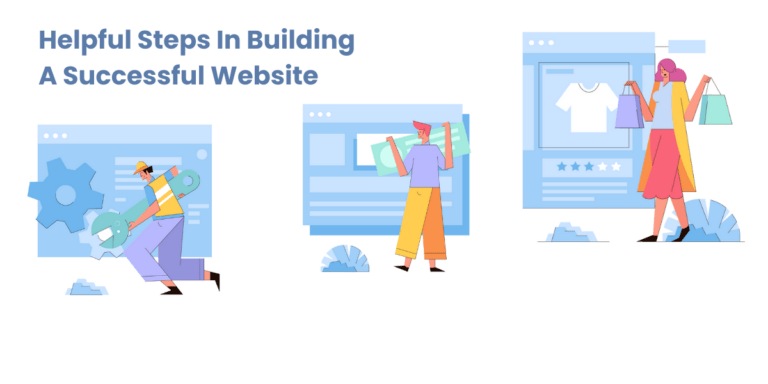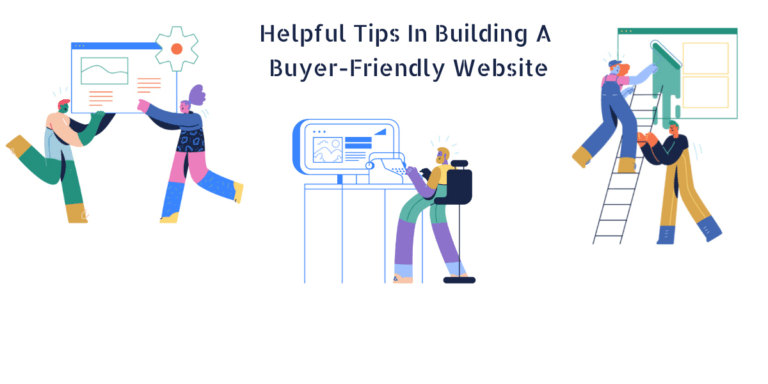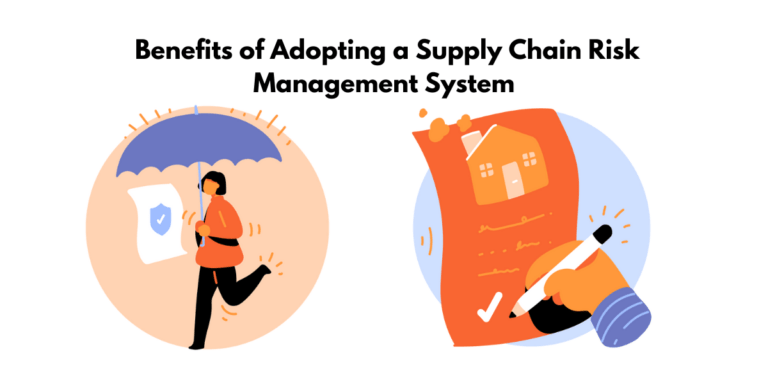Tips and Tricks on How to Increase Conversion Rate of your E-Commerce Site
What is an ecommerce conversion rate?
Ecommerce conversion rate is the percentage of visitors to an online store who take action and buy something from the store.
A high ecommerce conversion rate is the dream of every online retailer, but what’s a good conversion rate?
The answer to that question depends on many factors, including the type of product you’re selling and your target market.
In general, a good conversion rate is anything above 2%.
So how to increase conversion rate successfully? Keep reading to learn more.
How do you calculate an ecommerce conversion rate?
You’ve set up your ecommerce store, added products, and are ready to start selling. But how do you know if your store is performing well?
One key metric to track is your conversion rate.
Conversion rate is the percentage of visitors who take the desired action on your website. For an ecommerce store, this desired action is usually making a purchase.
Here’s a simple formula to help with your conversion rate calculation:
- Calculate the total number of transactions and a total number of visits to your ecommerce site.
- Divide the total number of conversions by the total number of visits, then multiply by 100 to get your conversion rate (ecommerce conversion rate = (Total transactions/Total visits) * 100).
- To get a more granular view, you can also calculate individual page or product conversion rates by dividing their respective totals by visitor totals and multiplying by 100 (e.g., Product A Conversion Rate = Total Product A Conversions/Total Visitors).

Why is your ecommerce conversion rate important?
Your ecommerce conversion rate is one of the most important numbers in your business.
It measures how well your website and marketing are working to turn visitors into customers.
A high conversion rate means you’re doing a good job driving traffic to your site and converting that traffic into sales. A low conversion rate means you need to improve your traffic or your conversion process.
No matter what business you’re in, if you want to be successful, you need to focus on improving your conversion rate.
In this post, we’ll look at ecommerce conversion rates, why they matter, and how you can improve yours.
Higher profits
Increasing ecommerce conversion rates helps to increase profits because it directly translates into more revenue without needing to bring in more traffic.
By employing CRO strategies, businesses can directly increase their ecommerce conversion rates, leading to greater profits without any associated costs.
Better results with marketing campaigns
Improving ecommerce conversion rates helps to increase the overall conversions for a store. This can be achieved by focusing on better converting channels, such as search and email, or by launching an email marketing campaign.
Businesses can optimize their landing pages by focusing on better converting channels and encouraging more visitors to become customers. An email marketing campaign can also help increase conversions by providing valuable content and promotions that encourage shoppers to purchase.
Improved website traffic and website optimization
Website traffic and website optimization can help with ecommerce conversion rate by increasing the number of buyers. This is achieved through search engine optimization (SEO), social media posts, and paid advertising.
Companies can increase their sales and revenue by using these strategies to drive more visitors to a website. By implementing conversion rate optimization techniques such as A/B testing or multivariate testing, businesses can further optimize their websites to cater to their target audience and increase conversion rates.
Increased customer satisfaction
Increased customer satisfaction helps improve ecommerce conversion rates because it makes customers more likely to purchase products. Customers are more likely to trust and be loyal to brands that they know offer good service, and they are also more likely to buy products that have positive customer reviews.
By making customer reviews more visible, adding social share buttons with counters, or showing real-time purchases on your website, you can increase your conversion rate by encouraging
customers to trust your brand more and feel confident about their purchase decision.
Easier scalability
Ecommerce businesses implementing conversion rate optimization (CRO) strategies can expect an increase in their overall revenue, as these strategies lead to a higher percentage of site visitors converting.
This means conversion cost for bringing in additional traffic and more money for your business without spending any extra resources.
Increased website authority
Increased website authority helps improve the ecommerce conversion rate by providing trust and credibility to visitors. High-quality, authentic reviews can prove that products are high-quality, while customer testimonials can provide additional social proof that encourages more visitors to convert.
By providing customers with an outlet to leave reviews of your products or leave quotes from people who have bought from you before, you can increase the trustworthiness of your website and improve its conversion rate over time.
Better customer experience
Improving the customer experience can help improve ecommerce conversion rates by providing a better customer journey. A better customer journey is greatly influenced by the user experience (UX) and user interface (UI) of a website or app.
You can increase your ecommerce conversion rate by offering potential customers an outstanding user experience, such as when navigating through the checkout process. The more satisfied customers are with their shopping experience, the more likely they will purchase from your website or app.
Increased website usability
Increased website usability helps improve ecommerce conversion rates by providing a good user experience, clear navigation, and easily accessible products. This lets visitors quickly find what they are looking for and potentially convert into buyers.
By optimizing site speed and only including the most important fields in forms, businesses can increase their ecommerce conversion rates by up to 20%. Additionally, providing a seamless customer journey through simple navigation and visible call-to-actions will help attract more visitors who are likely to convert.
Improved website trust and credibility
By improving website trust and credibility, retailers can reduce the rate of shopping cart abandonment. This is especially important for ecommerce websites, as 18% of shoppers in the Baymard study reported abandoning their cart due to a lack of trust.
By increasing website trust and credibility through things like installing an SSL certificate, adding visual signs of credibility such as trust badges or security providers, optimizing the Add to Cart button for user experience and ease of access, and displaying essential customer support information, retailers can improve their ecommerce conversion rate by reducing shopping cart abandonment.
Increased website security
Increased website security can increase the ecommerce conversion rate by building trust and confidence in the website. It can also help reduce shopping cart abandonment due to concerns about credit card safety.
By implementing best practices such as installing an SSL certificate and adding visual signs of credibility, such as trust badges or security provider logos, websites can increase their conversion rates by appearing more secure and credible to visitors. Additionally, web design solutions like mobile responsive themes can ensure that websites load well on mobile devices, increasing their reach potential on popular platforms like WordPress.

Top tips on how you can increase your ecommerce conversion rate
Conversion rate is one of the most important metrics for any ecommerce business.
After all, it doesn’t matter how much traffic you have if none of them buy anything from your store.
If you want to increase your ecommerce conversion rate, there are a few things you can do:
Perform market research to identify your target audience
Performing market research helps you better understand your site visitors, their needs, and preferences. This can help you create more targeted campaigns and offers to improve your ecommerce conversion rate.
By understanding who your target customers are and what makes them tick, you can tailor the user experience to their needs, leading to higher conversion rates. Additionally, you can optimize your marketing strategy accordingly by knowing which platforms are most effective for converting customers.
Optimize your website for ease of use
Optimizing your website for ease of use can increase your ecommerce conversion rate by making it easier for visitors to find the products they are looking for and navigate your website.
By optimizing your website for user experience, you will be able to reduce visitor frustration and increase their likelihood of converting into a customer. Additionally, optimizing site speed can positively impact conversions, as studies have shown that even a one-second delay in mobile loading time can decrease conversions by up to 20%.
Focus on your homepage to increase website conversions
Focusing on your homepage can increase your website conversion by making it more targeted to your target audience. You can include personalized offers or content relevant to the specific group of people visiting the page. For example, if you sell a monthly subscription box targeted at dog owners, you can create a landing page with curated products specifically for dogs. Additionally, focusing on ecommerce optimization and clear call-to-actions will help ensure visitors have a good user experience which can lead to increased conversions.
Create effective landing pages
Creating effective landing pages can increase your ecommerce conversion rate by targeting a specific audience, such as those interested in a particular product or event.
This helps ensure that visitors are more likely to convert because they are more familiar with what is being offered and understand why it would benefit them. Additionally, personalized landing pages can showcase products or services in the best light possible, which will help increase trust and confidence in your brand. This leads to higher conversion rates overall.
Use efficient advertising campaigns
Advertising and creating an organic presence on social media channels, such as Facebook and Instagram, can help increase your ecommerce conversion rate.
By strategically using Google Ads (previously Google Adwords) or Facebook Ads to target your audience and highlight the benefits of your products or services, you can increase the likelihood of conversions. Additionally, making your social media pages, shoppable will allow you to use existing digital marketing efforts to boost conversion rates directly.
Improve your shopping cart and checkout process
Streamlining your shopping cart flow and creating a user-friendly checkout experience can help increase your ecommerce conversion rate.
By removing unnecessary fields, allowing guest checkout, showing a progress bar, and displaying security seals, you can simplify the process for your customers and reduce the likelihood of them becoming irritated or leaving before making a purchase. This will ultimately lead to an increase in your ecommerce conversion rate.
Improve your customer experience
Improving your ecommerce site’s overall UX – User Experience – can help increase your conversion rate. The UX/UI influences a better customer journey and having an outstanding experience will encourage visitors to stay on your site longer and even recommend it to others.
By investing in short-term improvements for long-term success, you can create a superior customer journey that will increase your ecommerce conversion rate.
Invest in email marketing
Email marketing can help increase your ecommerce conversion rate by providing automated reminders, abandoned cart recovery, lead nurturing, advanced segmentation, and other useful features. These strategies will keep your customers informed about new products or promotions and encourage them to stay engaged with your brand.
By investing in email marketing, you will be able to drive more subscribers through the sales funnel and increase the lifetime value of each customer. This will result in higher conversion rates as customers are more likely to purchase when they are familiar with your brand.
Make use of social media platforms
Social media platforms can help increase your ecommerce conversion rate by providing opportunities for user-generated content (UGC) campaigns, such as asking customers to share images of products with a hashtag, displaying their content on individual product pages, and answering customer questions and advice. Additionally, more content helps your search ranking, which can improve your conversion rate.
Track your conversion rates and improve on successes
Tracking your conversion rates allows you to measure the performance of your web pages and apps. This enables you to understand what percentage of users are completing the goals that drive your business, which helps you gauge the success of your site or app and identify areas for improvement.
You can optimize your website or app to increase its conversion rate by understanding what drives conversions. This will allow you to get more sales with the same amount of traffic and maximize your ROI from Google Ads campaigns.

FAQs
Here are some of the most frequently asked questions about conversion rate:
What is ecommerce conversion rate optimization?
Ecommerce conversion rate optimization (CRO) is improving the rate at which visitors become paying customers.
To optimize your ecommerce conversion rate, you need to understand what drives visitors to make purchases and how to increase their likelihood of doing so. This includes optimizing product pages, filtering mechanisms, and checkout sequences to maximize conversions. It can also include A/B testing different versions of these elements to determine the most effective at generating sales. By tracking visitor behavior through analytics tools such as Google Analytics or Omniture, you can measure changes in ecommerce conversion rates over time and adjust your strategy accordingly if needed.
What is the average conversion rate?
According to Kibo Commerce’s latest report on ecommerce conversion rates in Q1 of 2021, the average conversion rate in the US is 2.3%. This number varies between mobile (2%), tablet (3%), and desktop (3%). Overall, the average conversion rate varies between 1% and 4%, with more time and money invested potentially resulting in higher rates up to 3% or 4%. 43% of ecommerce traffic comes from organic Google searches.
Does ecommerce funnel optimization help ecommerce conversion rates?
Yes, ecommerce funnel optimization can help improve ecommerce conversion rates. By optimizing your conversion funnel, you can guide potential customers through making a purchase and increase the likelihood that they will become buyers. This includes optimizing your product pages and ensuring that they are easy to find and understand, as well as improving your filtering mechanisms to make it easier for shoppers to find what they’re looking for. Additionally, creating a seamless checkout experience with clear instructions on completing their order will improve customer satisfaction and thus increase the likelihood of conversions.
How can SEO practices be used to increase an ecommerce conversion rate?
- Analyze your website’s SEO: Begin by reviewing the SEO practices of your ecommerce website. Look for areas where you can improve, such as page titles, meta descriptions, and URL structure.
- Optimize page titles: Make sure each title is clear and concise to represent the page’s content accurately.
- Craft compelling meta descriptions: Meta descriptions should be written to encourage visitors to click through to your website while enticing them to explore further on your site or app (if applicable).
- Optimize URLs: Ensure that all URLs are readable,keyword-rich, and include relevant keywords related to the content they link to (for instance, “women’s shoes” in a URL pointing at a women’s shoe section).
- Monitor performance with tools like Google Analytics: Use Google Analytics or another tool to monitor how well-optimized pages perform in terms of traffic sources, conversions, bounce rates, etc. This will help you identify areas where optimization is needed for visitors to increase their engagement with your brand online.
- Facebook Ads for Ecommerce: A Helpful Guide to Facebook Advertising for E-commerce Growth - December 7, 2023
- How to Get Investment Opportunity in Small Business: A Step-by-Step Guide - September 3, 2023
- Tips and Tricks on How to Increase Conversion Rate of your E-Commerce Site - December 15, 2021







